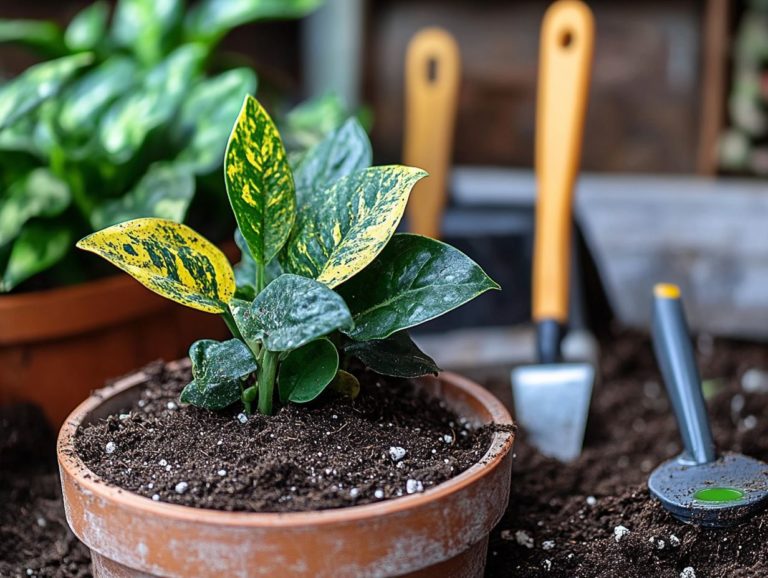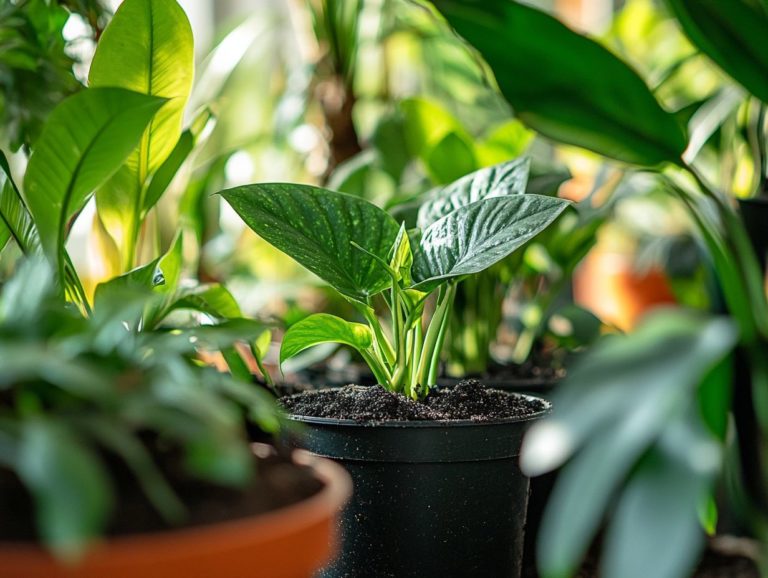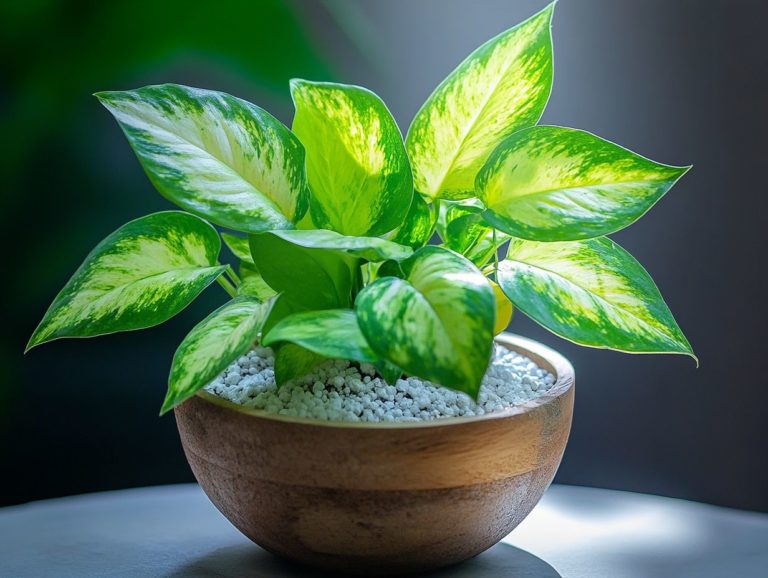The Importance of Soil Testing for Houseplants
Understanding the health of your houseplants begins with a crucial, yet often overlooked, step: soil test results will guide you in making informed decisions about fertilization. Assessing soil composition can reveal crucial information about nutrient management. Implementing effective soil management practices will lead to healthier plants and better yields. These nutrient levels provide valuable insights necessary for effective crop management. Maintaining soil health is key for your garden’s longevity. Just as you require a balanced diet to thrive, your plants need the right soil conditions to grow strong and vibrant.
This article explores the importance of soil testing, different types of tests available, and how to interpret the results for optimal plant health.
You’ll also find a straightforward guide to conducting a soil test at home, ensuring your green companions receive the best care possible.
Contents
- Key Takeaways:
- Understanding Soil Testing for Houseplants
- Types of Soil Tests
- Interpreting Soil Test Results
- Benefits of Regular Soil Testing
- How to Conduct a Soil Test at Home
- Frequently Asked Questions
- What is the importance of soil testing for houseplants and soil health?
- How often should I test the soil for my houseplants and improve soil quality?
- Can I use home testing kits for soil testing and soil analysis?
- Why is pH balance important for houseplants and soil acidity?
- What are the consequences of not testing the soil for houseplants and soil fertility status?
- How can I improve the nutrient levels of my soil and soil composition?
Key Takeaways:

- Regular soil testing is crucial for healthy houseplants, as it helps to identify deficiencies and imbalances in the soil that could hinder plant growth.
- There are various types of soil tests, including chemical and physical tests, which provide valuable information on the soil’s nutrient levels and structure.
- Interpreting soil test results can be overwhelming, but understanding the numbers can help you make informed decisions to improve your plant’s health.
Understanding Soil Testing for Houseplants
Grasping the nuances of soil testing for houseplants is vital to nurturing vibrant, thriving plants and unlocking their full growth potential. By analyzing soil composition, nutrient levels, and moisture content, you can pinpoint any deficiencies that might impede your plants’ development and overall well-being.
This thoughtful examination guides the effective application of fertilizers and enhances soil health and quality, paving the way for lush, resilient houseplants and fruitful harvests.
Why is it Important?
Soil testing is essential because it sheds light on the health and nutrient composition of your soil, which directly influences the growth and development of your plants.
Understanding the specific nutrients present or lacking in your soil is crucial for ensuring that your plants receive the necessary elements for vibrant growth. For example, if there s a nitrogen deficiency, you might notice stunted growth and yellowing leaves, while insufficient phosphorus could hinder root development and flowering.
By conducting soil tests, you can pinpoint the precise nutrient needs of your plants, enabling you to make tailored fertilizer recommendations. A comprehensive soil analysis can guide your decisions on which amendments to apply, addressing specific nutrient needs effectively. This approach enhances plant health and supports sustainable practices, helping you avoid over-fertilization while minimizing your environmental impact.
Types of Soil Tests
You have access to a range of soil tests that can offer invaluable insights into your gardening conditions. Among these, you ll find chemical tests, physical tests, and various methods, each serving a distinct purpose in helping you understand the nuances of your soil.
Chemical Tests
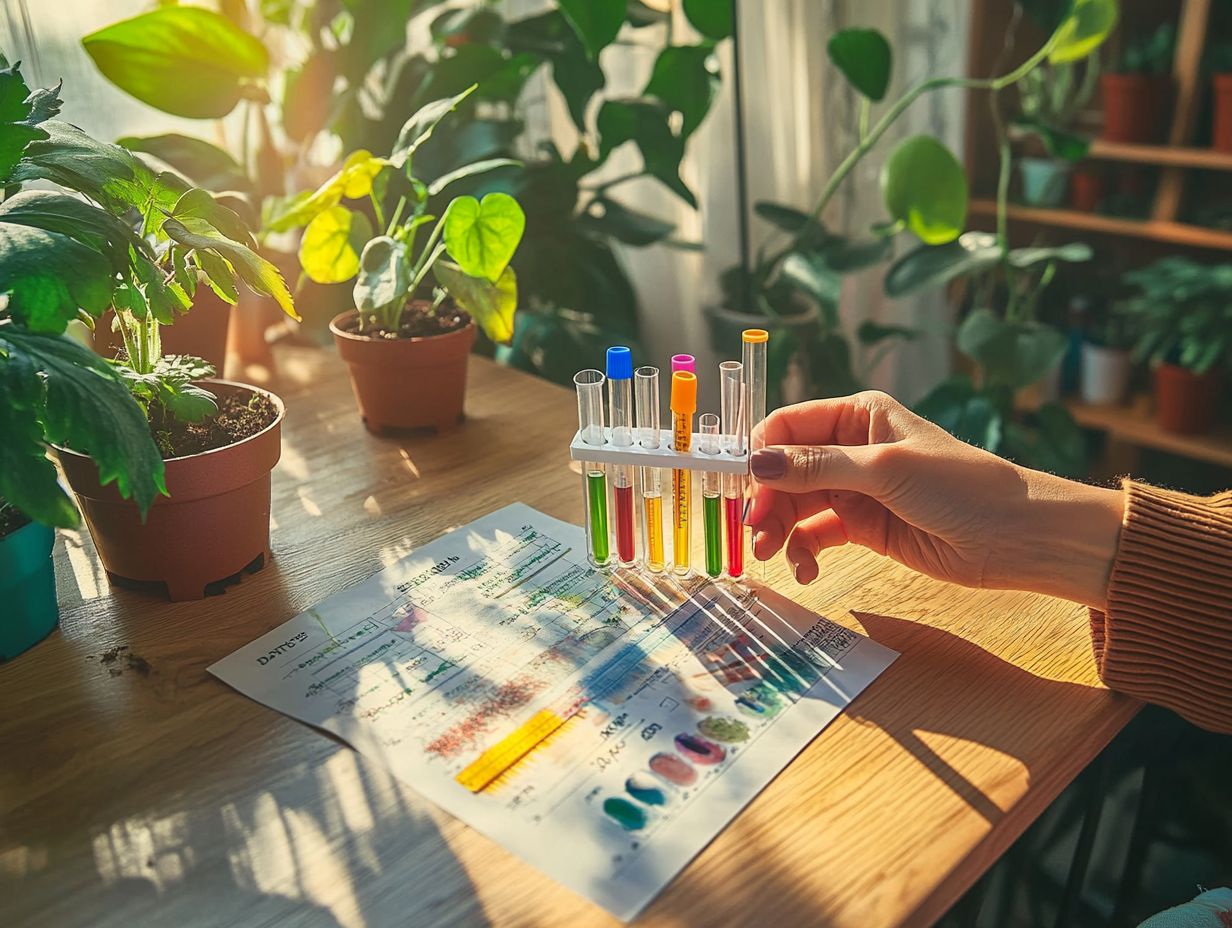
Chemical tests play a vital role in assessing nutrient levels, pH balance, and identifying toxic elements. Regular testing helps identify toxic elements that may harm plant life and soil health.
By evaluating the concentrations of essential nutrients like nitrogen, phosphorus, and potassium, these tests reveal valuable insights into your soil’s fertility status. Knowing the soil’s acidity helps you understand the environmental conditions that can either promote or impede healthy microbial growth. Healthy microbial growth is essential for nutrient cycling. Regular assessments help you make informed decisions about soil amendments.
Additionally, monitoring for toxic elements empowers you to prevent harm to your crops, ensuring that your plants flourish in a balanced environment. Therefore, conducting regular chemical tests is not just beneficial; it’s crucial for protecting your soil health and maximizing your harvest! For more information, you can refer to our guide on understanding soil pH for indoor plants.
Physical Tests
Physical tests focus on assessing soil texture, drainage, structure, and moisture content, all of which are essential for determining how well your soil can support plants. Understanding soil texture will guide you in selecting appropriate plants for your garden.
By evaluating these characteristics, you can understand how different soil types impact your plant choices and watering methods. Soil types like sandy, clay, or loamy affect water movement and nutrient retention. For instance, sandy soils drain quickly, making them less suitable for plants that thrive on moisture. In contrast, clay-heavy soils, despite being nutrient-rich, can hold onto too much water, leading to potential root rot.
Physical tests provide valuable insights into your soil’s health. This knowledge gives you the power to make informed decisions regarding amendments and irrigation practices. Ultimately, this comprehensive understanding is crucial for creating optimal conditions that foster robust plant growth and sustainability.
Interpreting Soil Test Results
Interpreting soil test results is an essential skill that gives you the power to accurately evaluate your soil’s fertility status. With this knowledge, you can confidently make decisions regarding soil management and fertilizer applications, ensuring that your garden flourishes to its full potential.
What Do the Numbers Mean?
The numbers in your soil test results unveil a variety of critical metrics, including nutrient levels and pH, which is essential for assessing your soil’s fertility and its suitability for specific plants.
Grasping these metrics is crucial for anyone looking to optimize plant growth, whether you’re a gardener nurturing a small patch or a farmer cultivating vast fields. For example, the pH level reveals the soil’s acidity or alkalinity, factors that can heavily influence nutrient availability to your plants. Understanding why soil quality matters for indoor plants is vital, as if the soil’s pH strays too high or low, vital nutrients may become locked away, making it difficult for plants to absorb them effectively.
The levels of macronutrients like nitrogen, phosphorus, and potassium are also key to crafting appropriate fertilizer recommendations. These figures not only affect the immediate vitality of your crops but also contribute to the long-term health of your soil. They provide valuable insights into necessary amendments that can boost fertility over time.
Thus, effective soil management relies on accurately interpreting these test results, giving you the power to make informed decisions for successful crop cultivation. This includes understanding root health in houseplants.
Benefits of Regular Soil Testing

Regular soil testing unlocks a treasure trove of benefits! It not only optimizes plant growth but also enhances soil fertility.
Moreover, regular soil testing contributes to environmental protection by promoting sustainable practices. This approach minimizes unnecessary fertilizer applications, ensuring that your practices are both efficient and sustainable.
Optimizing Plant Growth and Health
Optimize your plant growth and health easily with a nutrient assessment! A thorough nutrient assessment allows you to adjust your gardening methods and craft tailored fertilizer recommendations based on soil test results.
By understanding the specific nutrient needs of various plants, you can make informed decisions about the necessary amendments for your soil. For example, if your soil tests indicate a potassium deficiency, you can introduce targeted applications of potash, a type of fertilizer that provides potassium to enhance overall plant vigor and yield. Similarly, if you discover a lack of nitrogen, essential for robust foliage development, you can address this by applying nitrogen-rich fertilizers. Additionally, knowing what to know about soil for houseplants will further improve your plant care strategy.
This approach not only remedies deficiencies but also promotes balanced growth, allowing your plants to flourish in optimal conditions.
How to Conduct a Soil Test at Home
Conducting a soil test at home is a remarkably straightforward endeavor. It begins with the meticulous process of soil sampling, which is the first step in the testing process that allows you to collect accurate data, followed by selecting the appropriate testing services tailored to your needs.
Once you have the results, you can confidently apply the necessary amendments to improve your soil conditions, ensuring a thriving garden or landscape.
Step-by-Step Guide
A step-by-step guide to soil sampling begins with selecting the right areas of your garden, collecting soil samples, and preparing them for testing to achieve accurate results.
- Start by identifying different zones within your garden, paying close attention to variations in soil texture, moisture levels, and plant growth patterns. By observing these factors, you ll be able to gather more representative samples.
- Next, grab a clean soil probe or trowel and carefully collect samples from each area. Remember to slice off the upper 6 to 8 inches of soil to capture the most relevant data.
- Once you ve gathered your samples, mix them thoroughly in a clean container to create a composite sample that accurately reflects the area in question. After combining, dry the sample and store it in a labeled bag for sending to a lab.
- When you receive the test results, take your time interpreting the data to understand nutrient levels and pH. Based on these findings, consider necessary amendments, such as adding compost to boost organic content or adjusting pH levels to enhance soil health.
Frequently Asked Questions
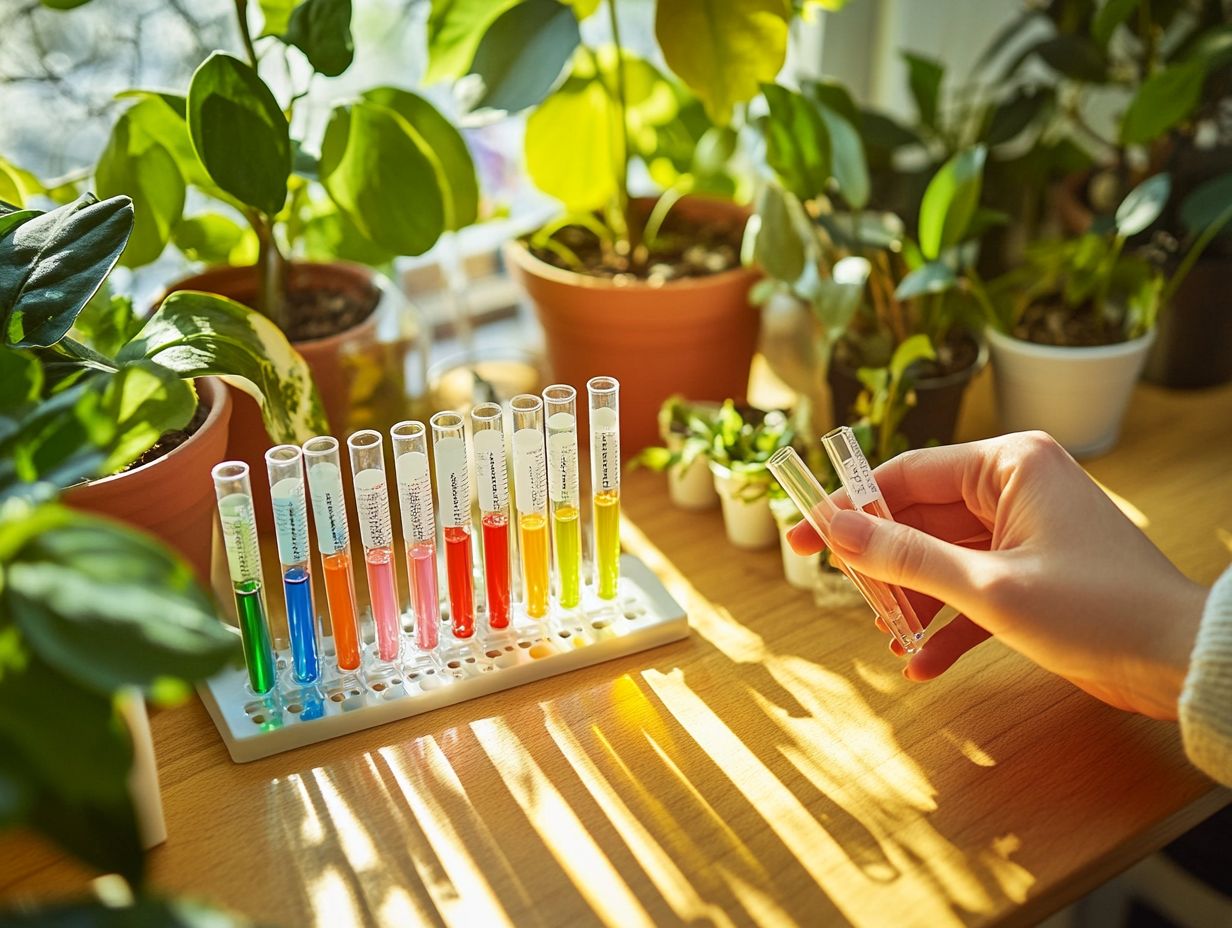
Got questions about soil testing? Here are some answers!
What is the importance of soil testing for houseplants and soil health?
Soil testing for houseplants is important because it allows you to understand the nutrient levels and pH balance of your soil, which can greatly impact the health of your plants.
How often should I test the soil for my houseplants and improve soil quality?
It is recommended to test your soil at least once a year, preferably in the spring, to ensure that your plants have the necessary nutrients for a thriving growth season.
Can I use home testing kits for soil testing and soil analysis?
Yes, there are a variety of home testing kits available that can provide accurate results for your soil’s nutrient levels and pH balance.
Why is pH balance important for houseplants and soil acidity?
The pH balance of soil can greatly affect the ability of plants to absorb nutrients. Different plants require different pH levels, so testing can help you determine if your soil is suitable for your specific houseplants.
What are the consequences of not testing the soil for houseplants and soil fertility status?
If you do not test the soil for your houseplants, you may be unknowingly providing your plants with inadequate nutrition, which can lead to stunted growth, nutrient deficiencies, and even plant death.
How can I improve the nutrient levels of my soil and soil composition?
If your soil test reveals deficiencies, you can amend it by adding fertilizers or organic matter to provide your plants with the necessary nutrients for healthy growth.
Start your soil testing today to ensure a flourishing garden!

